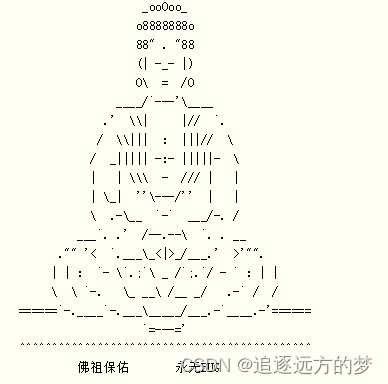第6天----【位运算进阶之-----位与(&)】七夕特别版
今天我们来学习C语言的位与。
文章目录
- 一、基本应用:
- 二、拓展应用:
-
- 1. 提取特定位的值:
-
- 小试牛刀:knife::
- 拓展思考:
- 2. 位掩码(Bitmasking):
- 3. 清零特定位:
- 4. 判断奇偶性:
- 三、思考题:
- 彩蛋:

❤️C语言的位与(&)操作是一种按位运算符,用于对两个操作数的每个对应位执行逻辑与操作。它的操作规则如下:
- 如果
两个操作数的对应位都为1,则结果的对应位也为1。(全1才1) - 如果
两个操作数的对应位有一个为0,则结果的对应位为0。(有0则0)
综上,一个位和1位与还是这个位,和0位与则是0;
一、基本应用:
#include - 这段代码中,我们定义了两个无符号整数变量 a 和 b,它们分别初始化为60和13。然后,我们使用位与操作符 & 对它们进行位与操作,并将结果赋值给变量
result。最后,我们使用printf函数打印出结果。
❤️上述代码的输出结果将为 12,这是因为60的二进制表示为 0011 1100,13的二进制表示为 0000 1101,两者进行位与操作后得到的结果为 0000 1100,即十进制的 12。
⭐ ⭐️ ⭐ ⭐️ ⭐ ⭐️ ⭐ ⭐️ ⭐ ⭐️ ⭐ ⭐️ ⭐ ⭐️ ⭐ ⭐️
❗️注意一些不常见的输出方式:
- %o:无符号8进制整数(不输出前缀0);
- %u:无符号10进制整数;
- %x(%X):无符号16进制,不输出前缀0x (小写x输出小写字母abcdef,大写X类似);
- %d(%i):有符号10进制整数(i为老式写法);
- %e(%E):科学计数法的形式输出 (小写e表示输出时用e,如2e-1;
- %p:16进制形式输出指针
- %g(G):在%e和%f中选择一种输出长度较短的输出。(G对应E)
⭐ ⭐️ ⭐ ⭐️ ⭐ ⭐️ ⭐ ⭐️ ⭐ ⭐️ ⭐ ⭐️ ⭐ ⭐️ ⭐ ⭐️
二、拓展应用:
1. 提取特定位的值:
❤️位与操作可以用于提取一个数字的特定位的值。通过与一个只有特定位为1的掩码进行位与操作,可以将其他位的值清零,从而提取出特定位的值。
提取特定位的值:
#include ❤️ 在这个例子中,我们定义了一个宏 MASK,它的二进制表示为 0000 1111,用于提取一个数字的低4位。在 main 函数中,我们定义了一个变量 num,并使用位与操作将其与掩码 MASK 进行位与运算,从而提取出低4位的值。最后,我们使用 printf 函数打印出结果。
输出结果将为:
Low nibble: 0xA
小试牛刀:
二进制分类
题目描述
若将一个正整数化为二进制数,在此二进制数中,我们将数字 1 1 1 的个数多于数字 0 0 0 的个数的这类二进制数称为 A A A 类数,否则就称其为 B B B 类数。
例如:
( 13 ) 10 = ( 1101 ) 2 (13)_{10}=(1101)_2 (13)10=(1101)2,其中 1 1 1 的个数为 3 3 3, 0 0 0 的个数为 1 1 1,则称此数为 A A A 类数;
( 10 ) 10 = ( 1010 ) 2 (10)_{10}=(1010)_2 (10)10=(1010)2,其中 1 1 1 的个数为 2 2 2, 0 0 0 的个数也为 2 2 2,称此数为 B B B 类数;
( 24 ) 10 = ( 11000 ) 2 (24)_{10}=(11000)_2 (24)10=(11000)2,其中 1 1 1 的个数为 2 2 2, 0 0 0 的个数为 3 3 3,则称此数为 B B B 类数;
程序要求:求出 1~n 之中( 1 ≤ n ≤ 1000 1 \le n \le 1000 1≤n≤1000),全部 A , B A,B A,B 两类数的个数。
输入格式
输入 n n n。
输出格式
一行,包含两个整数,分别是 A A A 类数和 B B B 类数的个数,中间用单个空格隔开。
样例
样例输入7样例输出
5 2
很明显,我们只需要得到一个数的二进制表达,然后用眼睛一扫,就可以数出来0和1哪个多(xixi),但我们这里只有10进制表达,如果都转为2进制的话还是有麻烦。虽然 C++ 中提供了一种用于存储 0 和 1 的数据类型 bitset ,可以用于将一个数转换为二进制,但没有必要。我们只需要借助今天学习的位与+位移–>就可以轻松解决。
❤️位移分为左移和右移:
左移就是向左移(乘以2),在后面补0,比如:110—>1100;
右移就是向右移(不一定是除以2),比如:1101–>110;
#include- 因题目过于简单,具体的解释我已经放在了注释中,不再过多说明。
拓展思考:
如何提取一个二进制数的末n位数呢❓
⭐️就比如拿
10001110来说,我们要得到1110,那么最简单的方法就是让它和00001111位与,末4位–>与2^4-1位与。
⭐️相信聪明的你已经发现了,要想得到一个二进制数的末n位数,最简便的方法就是让它和2^n-1位与.
⭐️那问题又来了,怎么得到任意连续的位数呢❓ 其实这也不难想出,利用位移的思想即可转化为上面的问题。
2. 位掩码(Bitmasking):
❤️位掩码是一种使用位与操作来检查或设置特定位的值的技术。通过定义一些常量或宏来表示不同的位,可以使用位与操作来检查或设置特定位的值。例如,可以使用位与操作来检查一个数字的最低位是否为1,或者将某些位设置为0或1。
#include ❤️在这个例子中,我们使用位掩码来表示一组标志位。通过定义宏或常量,我们可以将不同的位与特定的含义关联起来。在 main 函数中,我们定义了一个 flags 变量,通过位或操作将 FLAG_A 和 FLAG_B 设置为1。然后,我们使用位与操作检查每个标志位的状态,并打印相应的消息。(位或明天会将,'|'中,有1必1,全0才0)
- 输出结果将为:
Flag A is set
Flag B is set
Flag C is not set
3. 清零特定位:
❤️位与操作可以用于将一个数字的特定位清零。通过与一个只有特定位为0的掩码进行位与操作,可以将特定位的值清零,而保持其他位的值不变。
#include ❤️在这个例子中,我们定义了一个宏 CLEAR_BIT,它接受两个参数:一个数字 x 和一个位的索引 n。宏的作用是将数字 x 的第 n 位清零。在 main 函数中,我们定义了一个变量 num,并使用 CLEAR_BIT 宏将其第3位清零。最后,我们使用 printf 函数打印出结果。(~是按位取反的意思,0变1,1变0)
- 输出结果将为:
Cleared num: 0x32
4. 判断奇偶性:
❤️相信大家对于判断一个数是奇数还是偶数并不陌生。
- 常见的方法大概是这样的:
#include❤️但其实位与操作可以用于判断一个数字的奇偶性。通过与一个只有最低位为1的掩码进行位与操作,如果结果为0,则表示该数字为偶数;如果结果为1,则表示该数字为奇数。原因在于如果一个数是偶数,那么它的二进制表示中末位不能是1(为啥啊?),也就是它和1位与是0;奇数则二进制表示中末位一定是1。
- 进阶代码如下:
#include ❤️在这个例子中,我们定义了一个变量 num,它的二进制表示为 0000 1001。通过将 num 与1进行位与操作,我们可以判断最低位是否为1,从而判断数字的奇偶性。如果结果为1,则表示数字为奇数;如果结果为0,则表示数字为偶数。根据结果,我们打印相应的消息。
- 输出结果将为:
Number is odd
三、思考题:
⭐️如何判断一个数是不是2的幂,怎么利用今天的知识来解决呢❓且听下回分解……
彩蛋:
好了,今天的讲解就到这里了,最后再放一个彩蛋:
❤️七夕节到了,想来一场浪漫的表白却又没有好方式的友友们看过来,别眨眼:
想不想实现自己的爱心呢?想!怎么做呢?跟着我做!
- 首先创建一个txt文本(用记事本就行);
- 把下面的html代码复制进去;
- 将后缀改为.html即可;
DOCTYPE HTML PUBLIC "-//W3C//DTD HTML 4.0 Transitional//EN">
<HTML>
<HEAD>
<TITLE>真挚爱心TITLE>
<META NAME="Generator" CONTENT="EditPlus">
<META NAME="Author" CONTENT="">
<META NAME="Keywords" CONTENT="">
<META NAME="Description" CONTENT="">
<style>
html, body {
height: 100%;
padding: 0;
margin: 0;
background: #000;
}
canvas {
position: absolute;
width: 100%;
height: 100%;
}
style>
HEAD>
<BODY>
<canvas id="pinkboard">canvas>
<script>
var settings = {
particles: {
length: 500, // maximum amount of particles
duration: 2, // particle duration in sec
velocity: 100, // particle velocity in pixels/sec
effect: -0.75, // play with this for a nice effect
size: 30, // particle size in pixels
},
};
(function(){var b=0;var c=["ms","moz","webkit","o"];for(var a=0;a<c.length&&!window.requestAnimationFrame;++a){window.requestAnimationFrame=window[c[a]+"RequestAnimationFrame"];window.cancelAnimationFrame=window[c[a]+"CancelAnimationFrame"]||window[c[a]+"CancelRequestAnimationFrame"]}if(!window.requestAnimationFrame){window.requestAnimationFrame=function(h,e){var d=new Date().getTime();var f=Math.max(0,16-(d-b));var g=window.setTimeout(function(){h(d+f)},f);b=d+f;return g}}if(!window.cancelAnimationFrame){window.cancelAnimationFrame=function(d){clearTimeout(d)}}}());
var Point = (function() {
function Point(x, y) {
this.x = (typeof x !== 'undefined') ? x : 0;
this.y = (typeof y !== 'undefined') ? y : 0;
}
Point.prototype.clone = function() {
return new Point(this.x, this.y);
};
Point.prototype.length = function(length) {
if (typeof length == 'undefined')
return Math.sqrt(this.x * this.x + this.y * this.y);
this.normalize();
this.x *= length;
this.y *= length;
return this;
};
Point.prototype.normalize = function() {
var length = this.length();
this.x /= length;
this.y /= length;
return this;
};
return Point;
})();
var Particle = (function() {
function Particle() {
this.position = new Point();
this.velocity = new Point();
this.acceleration = new Point();
this.age = 0;
}
Particle.prototype.initialize = function(x, y, dx, dy) {
this.position.x = x;
this.position.y = y;
this.velocity.x = dx;
this.velocity.y = dy;
this.acceleration.x = dx * settings.particles.effect;
this.acceleration.y = dy * settings.particles.effect;
this.age = 0;
};
Particle.prototype.update = function(deltaTime) {
this.position.x += this.velocity.x * deltaTime;
this.position.y += this.velocity.y * deltaTime;
this.velocity.x += this.acceleration.x * deltaTime;
this.velocity.y += this.acceleration.y * deltaTime;
this.age += deltaTime;
};
Particle.prototype.draw = function(context, image) {
function ease(t) {
return (--t) * t * t + 1;
}
var size = image.width * ease(this.age / settings.particles.duration);
context.globalAlpha = 1 - this.age / settings.particles.duration;
context.drawImage(image, this.position.x - size / 2, this.position.y - size / 2, size, size);
};
return Particle;
})();
var ParticlePool = (function() {
var particles,
firstActive = 0,
firstFree = 0,
duration = settings.particles.duration;
function ParticlePool(length) {
// create and populate particle pool
particles = new Array(length);
for (var i = 0; i < particles.length; i++)
particles[i] = new Particle();
}
ParticlePool.prototype.add = function(x, y, dx, dy) {
particles[firstFree].initialize(x, y, dx, dy);
// handle circular queue
firstFree++;
if (firstFree == particles.length) firstFree = 0;
if (firstActive == firstFree ) firstActive++;
if (firstActive == particles.length) firstActive = 0;
};
ParticlePool.prototype.update = function(deltaTime) {
var i;
// update active particles
if (firstActive < firstFree) {
for (i = firstActive; i < firstFree; i++)
particles[i].update(deltaTime);
}
if (firstFree < firstActive) {
for (i = firstActive; i < particles.length; i++)
particles[i].update(deltaTime);
for (i = 0; i < firstFree; i++)
particles[i].update(deltaTime);
}
// remove inactive particles
while (particles[firstActive].age >= duration && firstActive != firstFree) {
firstActive++;
if (firstActive == particles.length) firstActive = 0;
}
};
ParticlePool.prototype.draw = function(context, image) {
// draw active particles
if (firstActive < firstFree) {
for (i = firstActive; i < firstFree; i++)
particles[i].draw(context, image);
}
if (firstFree < firstActive) {
for (i = firstActive; i < particles.length; i++)
particles[i].draw(context, image);
for (i = 0; i < firstFree; i++)
particles[i].draw(context, image);
}
};
return ParticlePool;
})();
(function(canvas) {
var context = canvas.getContext('2d'),
particles = new ParticlePool(settings.particles.length),
particleRate = settings.particles.length / settings.particles.duration, // particles/sec
time;
// get point on heart with -PI <= t <= PI
function pointOnHeart(t) {
return new Point(
160 * Math.pow(Math.sin(t), 3),
130 * Math.cos(t) - 50 * Math.cos(2 * t) - 20 * Math.cos(3 * t) - 10 * Math.cos(4 * t) + 25
);
}
// creating the particle image using a dummy canvas
var image = (function() {
var canvas = document.createElement('canvas'),
context = canvas.getContext('2d');
canvas.width = settings.particles.size;
canvas.height = settings.particles.size;
// helper function to create the path
function to(t) {
var point = pointOnHeart(t);
point.x = settings.particles.size / 2 + point.x * settings.particles.size / 350;
point.y = settings.particles.size / 2 - point.y * settings.particles.size / 350;
return point;
}
// create the path
context.beginPath();
var t = -Math.PI;
var point = to(t);
context.moveTo(point.x, point.y);
while (t < Math.PI) {
t += 0.01; // baby steps!
point = to(t);
context.lineTo(point.x, point.y);
}
context.closePath();
// create the fill
context.fillStyle = '#ea80b0';
context.fill();
// create the image
var image = new Image();
image.src = canvas.toDataURL();
return image;
})();
// render that thing!
function render() {
// next animation frame
requestAnimationFrame(render);
// update time
var newTime = new Date().getTime() / 1000,
deltaTime = newTime - (time || newTime);
time = newTime;
// clear canvas
context.clearRect(0, 0, canvas.width, canvas.height);
// create new particles
var amount = particleRate * deltaTime;
for (var i = 0; i < amount; i++) {
var pos = pointOnHeart(Math.PI - 2 * Math.PI * Math.random());
var dir = pos.clone().length(settings.particles.velocity);
particles.add(canvas.width / 2 + pos.x, canvas.height / 2 - pos.y, dir.x, -dir.y);
}
// update and draw particles
particles.update(deltaTime);
particles.draw(context, image);
}
// handle (re-)sizing of the canvas
function onResize() {
canvas.width = canvas.clientWidth;
canvas.height = canvas.clientHeight;
}
window.onresize = onResize;
// delay rendering bootstrap
setTimeout(function() {
onResize();
render();
}, 10);
})(document.getElementById('pinkboard'));
script>
BODY>
HTML>

